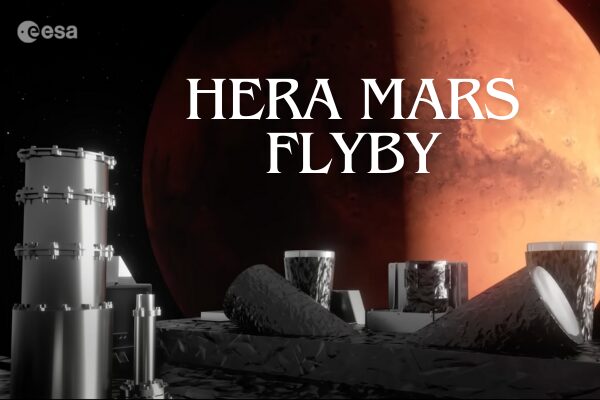ESA Hera Probe Captures Rare Views During Mars Flyby
The European Space Agency (ESA) has released remarkable images captured by its ESA Hera space probe during a recent Mars flyby. The event occurred on March 12, with the images unveiled the following day in Darmstadt, Germany.
Mars Flyby Sets Hera on Path to Asteroids
Hera’s close approach to Mars was not just for observation. The flyby gave the probe a crucial gravitational boost. This manoeuvre, often called a “slingshot,” is designed to send Hera toward its main mission targets—the asteroids Dimorphos and Didymos.
Ian Carnelli, who manages the Hera mission at ESA, explained that this step was essential for reaching the binary asteroid system. The mission’s ultimate goal is to develop a reliable method to deflect hazardous asteroids, enhancing global planetary defence.
Asteroid Threats and Defence Strategies
ESA’s Hera mission plays a key role in preparing for potential asteroid threats. Carnelli highlighted that over 100 million asteroids orbit within the solar system. Among them, around 30,000 are actively monitored due to their potential danger to Earth.
According to Carnelli, scientists are confident about tracking larger asteroids—those capable of causing mass extinction events, similar to the one that wiped out the dinosaurs. However, smaller asteroids, roughly 100 metres in size, remain a challenge. These are harder to detect and pose a significant risk due to their size and speed.
Hera aims to improve understanding of such objects. By collecting data on their composition and movement, scientists hope to refine asteroid deflection techniques, making them predictable and repeatable in the future.
Unseen Views of Mars and Its Moon Deimos
The images captured by Hera during the flyby were taken from a distance of about 5,000 kilometres (3,106 miles). These photographs show detailed views of Mars’s surface and its small moon Deimos.
Carnelli described the images as presenting a perspective “never seen before.” The unique viewpoint offers new insights into Mars’s environment and helps further ESA’s research objectives.
The Mars flyby not only marked a milestone in Hera’s journey but also provided valuable scientific data. This mission supports ESA’s wider aim of safeguarding Earth through advanced space technologies and proactive planning.
with inputs from Reuters


